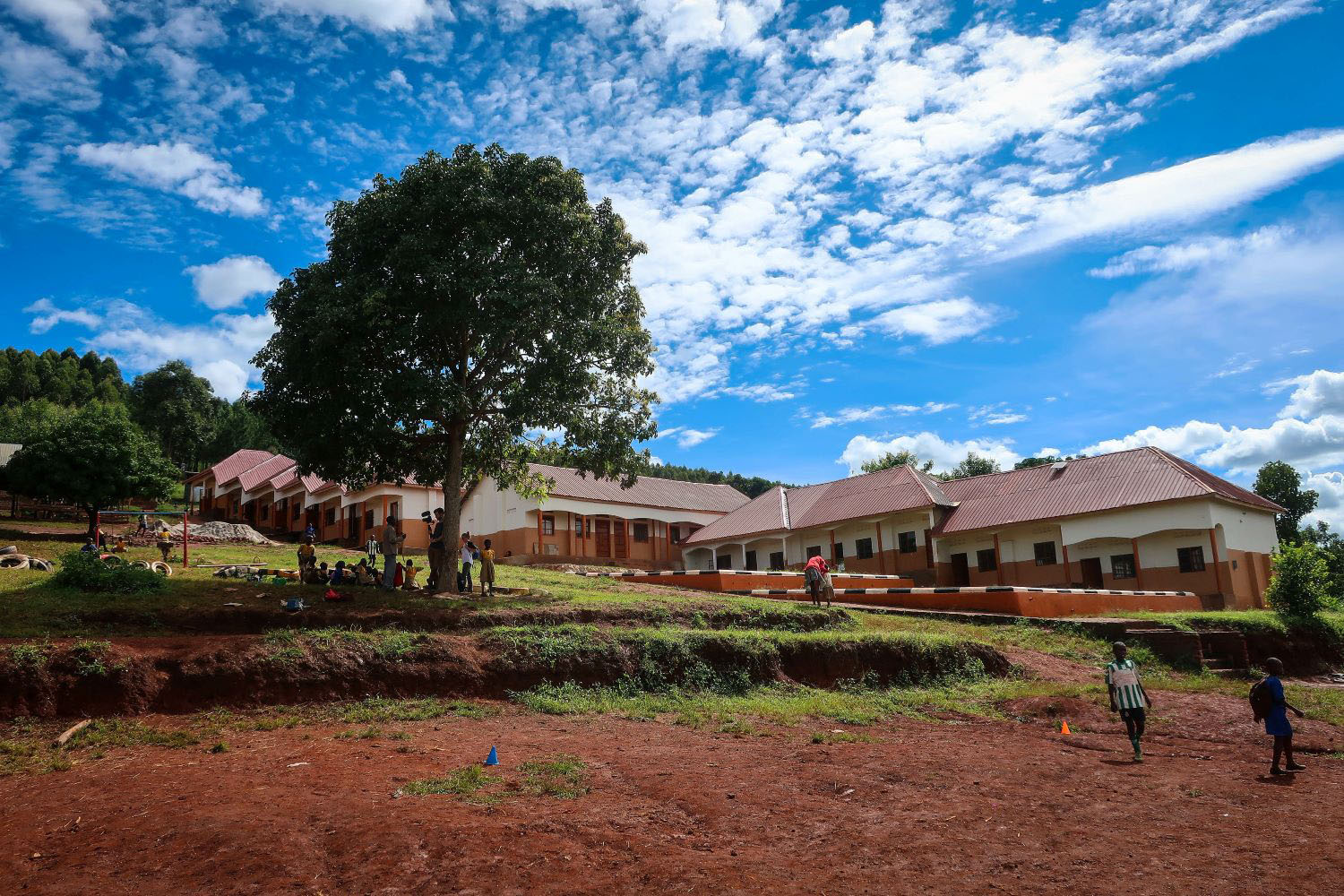Recommended

Blog Post
“It is only by hearing from children themselves that we can really understand what it is like for children in school nowadays.” (Devries and others 2015)
Violence in schools—physical, sexual, and psychological—is an insidious problem, all too common in many countries around the world. While we have the data to characterize the overall problem, policy makers often lack the data they’d need to act effectively against violence (e.g., which people are committing it? Is it getting better or worse over time?). We are also missing data on some of the most vulnerable groups, such as children under age 10, or disabled children. Even education systems that want to take action need better data to do so effectively.
But gathering better data on this topic presents significant challenges: gathering data about violence comes with ethical dilemmas, as does gathering data from children. There are lots of resources available to guide the way; but they don’t eliminate the risks.
Here are some of the risks, as laid out in a review by the Technical Working Group on Data Collection on Violence against Children in 2012:
-
If an interviewer discovers that a child is in danger (for example, through ongoing abuse), the interviewer has an ethical responsibility to take some action. But in countries with weak child protection policies, simply reporting the danger to a government agency may not be sufficient.
-
Children may be upset by questions about violence, or by talking about their experiences of violence.
-
Children may experience retribution from perpetrators of violence either for talking about violence or because perpetrators think children have talked about violence. Even in cases where the risk of retribution is low, asking children about violence may lead them to fear retribution.
-
Informed consent is a fundamental principle of research ethics: does the interviewee understand what they’re doing and do they freely agree to do it? With children—especially young children—their understanding of what the survey means may be imperfect, and the fact that adults perceived as authority figures are asking them questions may make it harder for them to say no.
Most—hopefully all!—studies of violence among children undergo ethical review before the study takes place and so have procedures in place to mitigate these risks. One exceptional study by Karen Devries and others not only describes their procedures to protect children but also the team’s reflections on how well the procedures worked and the results of later interviews with 40 children to see how they felt about the procedures. The context is an evaluation of a program to reduce school violence in Uganda.
Here is what the research team learned about each of the issues above, and how they dealt with them.
How well do referrals work?
The research team set up a comprehensive referral protocol, depending on the kind of violence the child disclosed. For example, a child who reported being raped in the past few days was immediately referred to a health center for treatment; whereas if a child reported a less severe form of sexual violence sometime over the last year, then the partner non-government organization (NGO) working with the researchers (called Raising Voices) followed up—usually working with appropriate community officers—over a slightly longer timeframe.
But in Uganda, out of more than 500 children referred, less than 1 in 25 actually received follow-up from local community services (either government or NGO) within the agreed timeframe. Some potential reasons for the lack of follow-up include weak training, competing caseloads, and differences in judgments about how serious certain types of violence are. In other words, even though the research team’s framework for which types of violence required immediate follow-up was agreed in advance with local stakeholders, it may be that when faced with a referral, local experts were less concerned about some types of violence—such as beatings, which research suggests many Ugandan adults see as necessary to guide children’s behavior. The research team ultimately recruited their own counselor to follow up on the cases where community services fell short.
What if the children are victims of serious violence but don’t want their information to be referred? This only came up once in the Uganda study, but the protocol the team agreed upon was that those cases would be discussed anonymously with the most senior district official in charge of child protection, to make decisions case by case. On the one hand, the children may understand their situation best; on the other hand, in some cases the need for immediate protection could trump that.
Do questions about violence harm children?
In the Uganda study, most children (“the overwhelming majority”) expressed relief rather than upset at being asked about their experience. One child reported that “I felt that the dirt that was on my heart had gone off.” Another said that “deep in my heart, I felt happy…because I never expected that it would happen…coming to ask me such questions.” This was no doubt in part due to good training and subsequent performance by the interviewers. All interviewers participated in three weeks of intensive, full-time training after a careful recruitment process. Several children reported feeling high levels of trust in the interviewers.
There were exceptions, though. Some children reported feeling bad and then good; others reported feeling fear that their information would not be kept confidential. To mitigate these challenges, the research team hired a counselor who had experience working with children locally. Every child who was interviewed had the option of speaking with the counselor.
Do questions about violence lead to retribution or the fear of retribution?
A couple of children did mention feeling fear that their answers would be passed on to the people they had exposed as abusers. There wasn’t evidence that merely participating in the survey led to retribution, but there was one case where follow-up services led to retribution. As the study reports,
A community development officer visited a child at home and, with the child’s permission, spoke to an abusive family member. The child reported that the abuse worsened, and that the contact number the officer had given her was not working.
The research team offered follow-up support from the counselor they contracted, but these are the cases researchers must do all they can to avoid. Of course, the researchers weren’t those who followed up, but the events above were a direct result of the research activity.
How did researchers handle informed consent and privacy?
The team sought consent in three stages. First, the NGO staff visited national and district education ministry officials for letters of support. Second, the team sought consent from head teachers for participation in the research. Children were sent home with notes about the research. Parents could veto participation at in-person information meetings, by phone, or by note. The information that parents and children received mentioned that the interviews would ask about if kids had been hurt, that some kids might find this upsetting, and that cases would be referred to officials if children were judged to be at risk of harm. In most cases, interviewers had no trouble finding a place to conduct the interview that was within sight of others but not within earshot of others.
One challenge in research—not just with children—is that participants sometimes believe that the research is focused on helping them directly, when the primary purpose of the research is to identify solutions to benefit all children. Beyond seeking help for children in immediate danger, most of the benefits of the research may not benefit the interviewees directly or immediately. Some of the qualitative interviews in Uganda suggest that children in this study had the same misconception. The researchers recommend phrasing along the lines of “You will not benefit directly from participating in this study, but your participation will help others like you.”
Resources to help keep kids safe
The above study set in Uganda highlights both several of the challenges of research on school violence and potential solutions. Not every study will follow precisely the same procedures, and that makes sense since contexts are so different. For example, the Violence against Children Surveys—now implemented in more than twenty countries—adapt their referral process based on administrative and legal realities (including mandatory reporting laws) in different countries. Innovations in violence data collection, such as gathering data from younger children to make sure young children are protected, will require innovations in management of ethical issues: both the Good Schools study described above and the Violence against Children Surveys focus on children over the age of ten.
Yet most studies don’t even report how they deal with these issues. A review of 75 recent studies that gathered primary data about violence during COVID showed that none of the studies reported how or if they facilitated referrals when violence against children was reported. Researchers can’t learn from each other (and keep each other accountable) if they don’t share how they’re keeping children safe.
Thankfully, there are resources to help researchers protect children while doing this important research. Here are six. If there are resources you’ve found particularly useful, please share them in the comments.
-
“Ethical considerations for collecting data on violence against children” (from the INSPIRE Indicator Guidance and Results Framework, by UNICEF and others, 2018)
-
“Ethical Principles, Dilemmas and Risks in Collecting Data on Violence against Children” (by UNICEF and others, 2012)
-
“So You Want to Involve Children in Research? A toolkit supporting children’s meaningful and ethical participation in research relating to violence against children” (by Save the Children, 2004)
-
“Ethical Issues in Surveys about Children's Exposure to Violence and Sexual Abuse” (by Finkelhor and others, 2016)
-
“Collecting data on violence against children and young people: need for a universal standard” (by Devries and others, 2016)
-
One group of children for which these issues are particularly understudied are children with disabilities. Here’s a guide specifically focused on them: “How to conduct good quality research on violence against children with disabilities: key ethical, measurement, and research principles” (by Kyegombe and others, 2019)
Thanks to Amina Mendez Acosta for providing background research, and thanks to Amber Peterman, Amina Mendez Acosta, Gabriela Smarrelli, and Maya Verber for helpful comments on this blog post.
Disclaimer
CGD blog posts reflect the views of the authors, drawing on prior research and experience in their areas of expertise. CGD is a nonpartisan, independent organization and does not take institutional positions.
Image credit for social media/web: vladk213 / Adobe Stock







